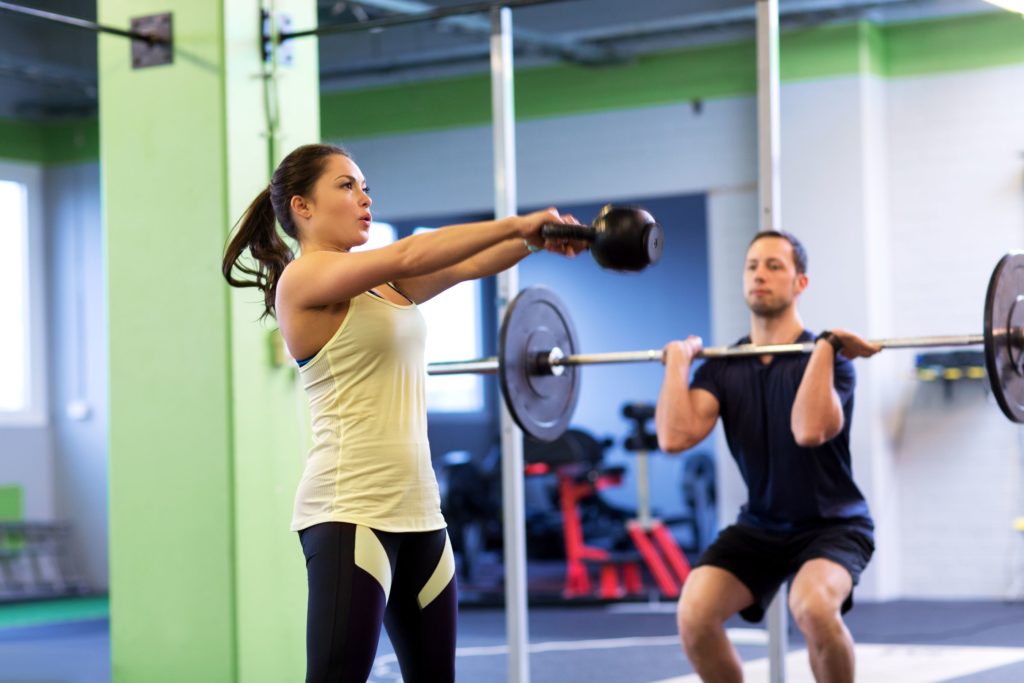How to create your individual training plan

Not everyone has a personal trainer or the opportunity to have a professional create their very own training plan. Although it is advantageous to have an experienced expert take on this task, you can also put together your own individual training plan. However, you should keep these things in mind:
The first steps to an individual training plan
The first question you should ask yourself is what goals you want to achieve with regular training. Do you want to lose weight, build muscles, or finally run your first half marathon? It’s best to write this down and answer the second question at the same time: How much time do you want to set aside for your training? One hour or more every day, or, because there is no other way, 30 minutes three times a week?
- If you want to lose weight or build muscle, strength training is ideal. With the right programme, it doesn’t take much time either.
- If you want to focus more on endurance, you need to plan a little more time. Especially if you’re going to run longer distances.
Where do you want to train?
The next important question is in the title: You can train at home, but you will probably be limited. On the one hand, in terms of space, and on the other hand, in terms of equipment choice. But the good news is that you can get a fabulous and varied workout with simple and inexpensive equipment. Dumbbells and resistance bands are ideal for beginners.
- You can also work with your own body weight. However, this is not so good for beginners because it is difficult to determine the intensity.
- But you can also train in a gym. There you often have a large selection of equipment and, with luck, experienced trainers.
What exercises should I do?
There is a straightforward formula here: “Make it easy on yourself.” Especially if you have little or no experience. Choose exercises that target many muscle groups at once. Only professionals and those who place great value on a well-defined body need to choose more complicated exercises to target all muscle groups. For everyone else, my tip is:
A full-body workout is ideal, which you should do two to three times a week on non-consecutive days.

You should train these muscle groups
- the leg muscles in the front, back and sides
- the gluteal muscles
- breast, shoulder, biceps and triceps
- the core muscles
Your training plan with these exercises
- Leg muscles: squats, Bulgarian squats, lunges in diferent variations, jumps and plyometric jumps.
- Glutes: walking lunges, hip thrusts, deadlifts, single leg deadlifts, step ups, glute bridges.
- Breast, shoulder, triceps, biceps: Push-ups, bench press, cable crossover, dumbbell flies, biceps and triceps curls, dips.
- Back muscles: Deadlift, pull up, bent over row, lat pulldown, inverted row.
- Core muscles: Planks in different variations, V-ups, V-sit, Russian twist.
My tip: You now choose one exercise from each of the 5 groups and complete your training with it. Of course, you warm up beforehand. You can always do the same exercises for a while, but you should start to vary them to make the training more varied.
Sets and repetitions
- Beginners start with 3 sets per exercise with 8 to 12 repetitions and 60 to 90 seconds rest in between. The weight should be 60 percent of the repetition maximum.
- Advanced exercisers can also do 3 to 5 sets per exercise and reduce the rest time to 30 to 60 seconds. You can then also work with 70 to 85 percent of your repetition maximum.

General rules for your training plan
- If you want to lose weight, 8 to 12 or even 15 repetitions at 60 to 70 percent of your repetition maximum are ideal. If you can do more repetitions with the weight you are using without problems, you should increase the weight or do a new repetition maximum test.
- When doing exercises with your own body weight, it depends on your body feeling. If you find an activity very easy at some point, you should make it more difficult or replace it with another exercise that trains the same muscle groups.
- If your goal is to build more muscle, you should work with 80 or even 90 percent of your maximum strength. Then 3 to 5 repetitions are sufficient. The pauses between the sets are then 3 minutes.
- A study published in 2015 showed that 3 to 5 repetitions with very high weights are best for building muscle mass.
How long does it take to get results?
With an excellent warm-up program, you need about 45 to 60 minutes for a training session. If you train two to three times a week on non-consecutive days, you can expect good results. But even if you only have 30 minutes, you can do an effective workout. Just choose 3 exercises and then vary from training to training to regularly target all major muscle groups.